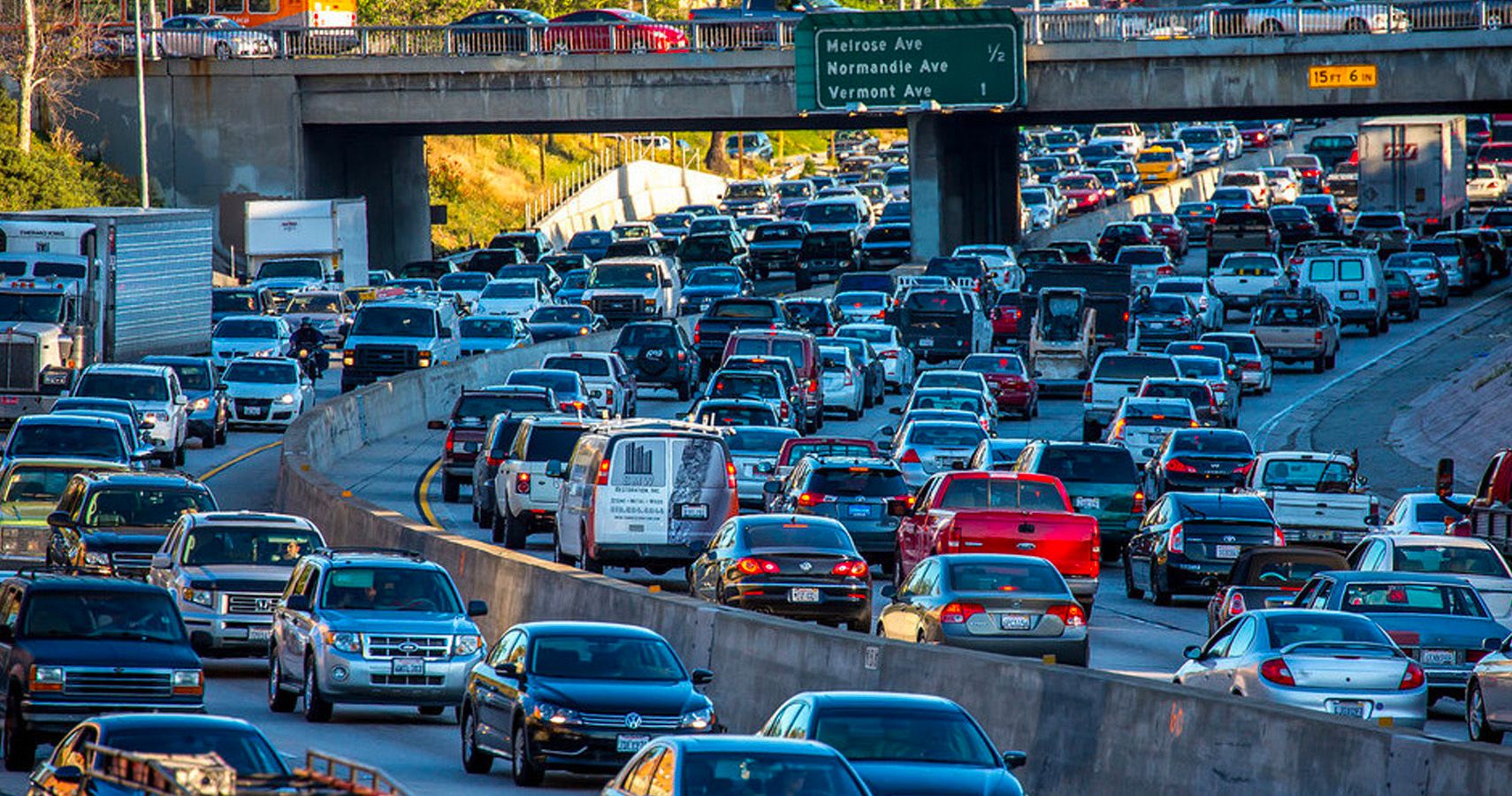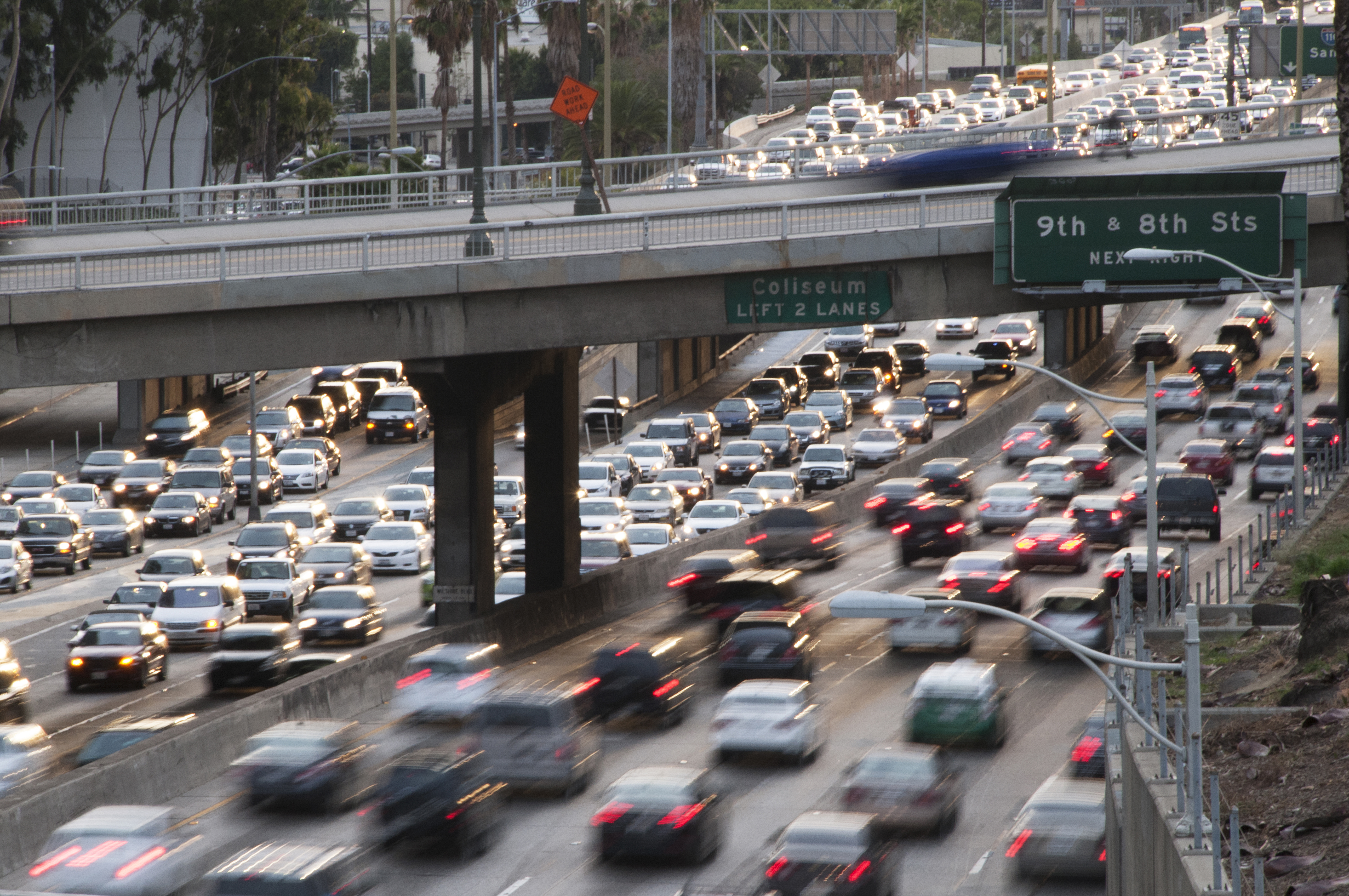

Comparatively, the annual average daily traffic on the I-10 freeway within the corridor is about 300,000 vehicles. So what happened after the line opened? Expo saw around 20,000 average daily boardings in the three-month period immediately after the opening of the line. If new passengers are mainly previous car users, this could signal more of a potential traffic benefit than if they were previously using other transit routes or modes, biking, walking, or not traveling at all. Even if transit ridership increased, we needed to determine whether the increase was enough to affect traffic performance, which depends on the magnitude of transit service increase and where the new passengers come from. A subsequent net increase in transit ridership along this service increase is a necessary but not sufficient condition for any measurable impact on traffic. The Expo Line addition resulted in a small increase in transit service supply within its corridor - about 4 percent more vehicle hours of service. We wanted to answer two questions about the Expo Line: Did it significantly increase transit ridership within the I-10 corridor? And did it reduce traffic congestion and improve travel time reliability along the I-10 freeway and nearby parallel arterials during weekday peaks? As the corridor suffers from heavy peak-period traffic, Metro marketed the Expo Line as a means to increase transit mode share along I-10 between downtown and the Westside, noting that it would provide Angelenos “real options for parking their cars, hopping on the bus or train and beating high gas prices.” The line is roughly parallel to the I-10 freeway, and both the corridor and several parallel arterials have extensive bus transit service: Metro’s local and rapid buses, Culver CityBus, and Santa Monica’s Big Blue Bus routes. The first operating phase of the Expo Line connected Downtown Los Angeles with Culver City (Figure 1), running east-west for nearly nine miles through a dense and congested part of the city. If these conditions are met, light rail systems can attract new riders by promoting car-to-transit shifts, and thereby reduce congestion, improve mobility and reliability of travel, and increase person throughput across their service corridors. The new transit system should not interfere with or slow down roadway traffic within the corridor.Specifically, enough existing travelers must be willing to shift to transit and new travelers must be willing to choose transit over other modes if quality transit service such as light rail is introduced within the corridor. Potential demand for transit travel within the corridor must be enough to generate more passengers.The increase must be large enough to be perceived by individual travelers. A net increase in transit service and accessibility, relative to previous transit services within the service corridor, in order to attract new passengers rather than those who already used transit.We identified three conditions that must be satisfied for a light rail system to decrease corridor-level traffic congestion: Our results indicate that the real benefits of rail transit investments are not in traffic reduction, but rather in increasing the accessibility and popularity of transit within high-demand corridors. We took advantage of a unique data set to analyze how the Expo Line affected transit ridership and road traffic in the corridor - and found that the project has had a positive impact on the former, but not much effect on the latter. There are many studies of the impacts of light rail, but few have examined its impacts specifically on traffic congestion. Yet, little evidence exists to support this claim. One of the common justifications for investing in light rail is its potential to reduce roadway traffic congestion. The first segment of the Los Angeles Expo Line, between Culver City and Downtown LA, opened in 2012 as part of this widespread recent investment.


LA Metro has the most ambitious urban rail transit development program in the U.S.: Projects worth approximately $8 billion are currently under construction. Light rail service, in fact, has grown at a higher rate than bus, subway, and other public transit modes.

Reports from the National Transit Database show that between 19, light rail transit capacity increased from 27 million to 99 million service miles nationally. Light rail projects are booming around the United States. Why sit stuck in traffic while the light rail glides by? Light rail is an attractive idea, especially in famously congested Los Angeles.


 0 kommentar(er)
0 kommentar(er)
